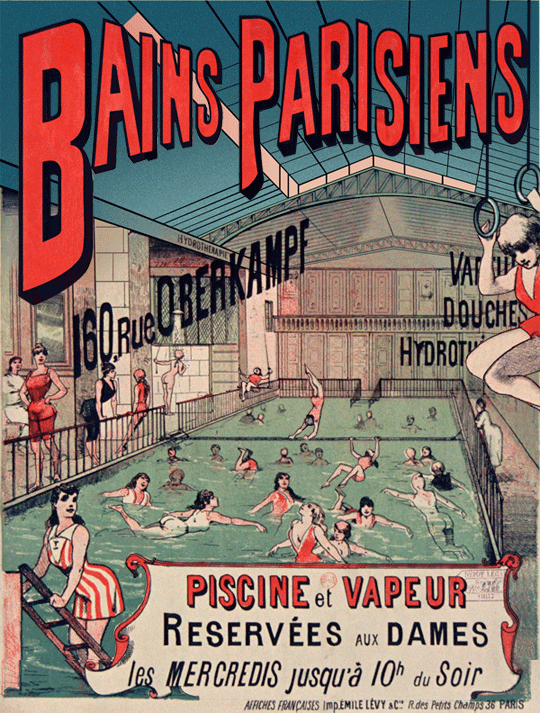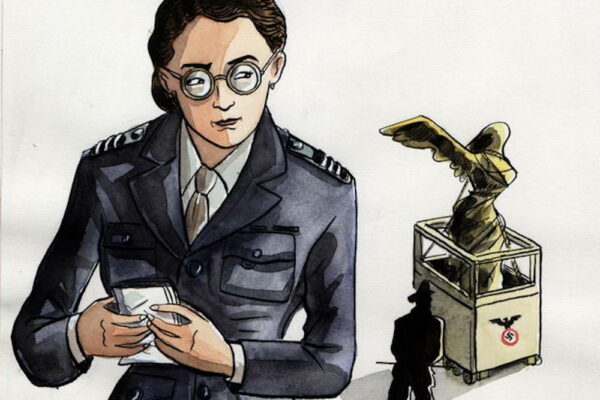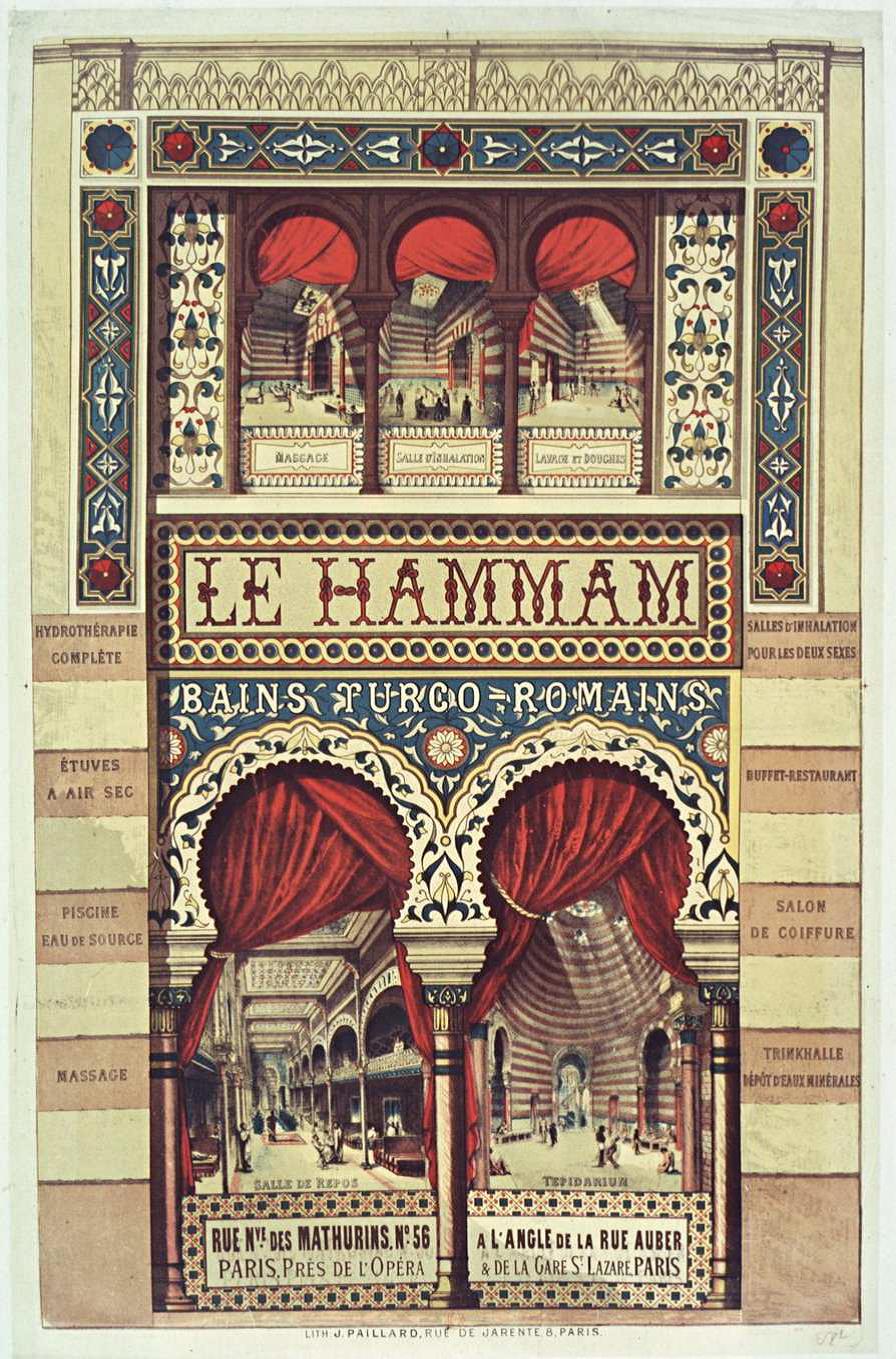
I was researching old Parisian advertisements from the 19th century (as you do) when I came across this one for a palatial Turkish bath house near the opera house. Behind its vaulted arches, magnificent mosaics were lit by stars of coloured glass and according to a 19th century ‘Bather’s Guide’ to Paris, the establishment boasted Roman-Turkish hammams, hydrotherapy treatment, hair and pedicure salons, massage rooms, a coffee shop and a restaurant. Along the nave, guests relaxed on velvet chaise longues and there was even a library. With the street address written right there on the poster, I was curious to see myself if there was anything left of this majestic place…
To make my job easier of course, today the street has a different name (it dropped the “Nouvelle” and became simply “rue des Mathurins”) and the building number 56 is now number 18. But as I came around the corner, to my great surprise, there were the arabesque arches and those unmistakable geometric details…
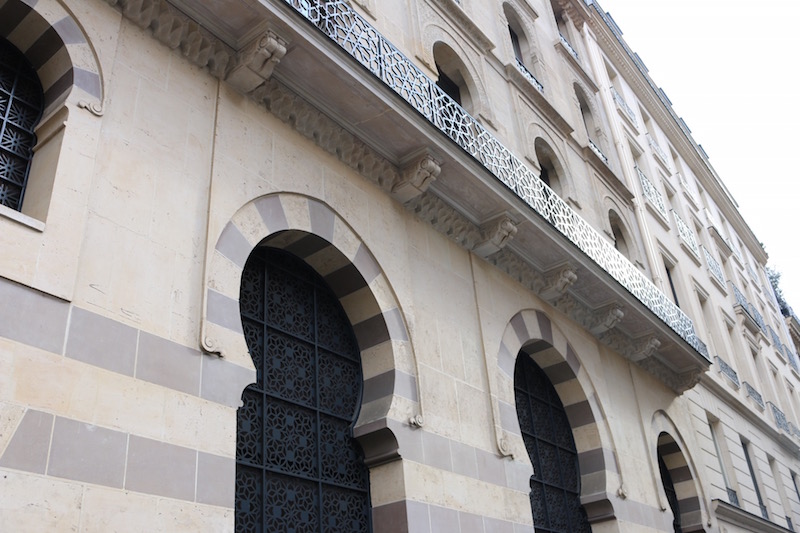
There it was after all this time, the very same building from the poster.
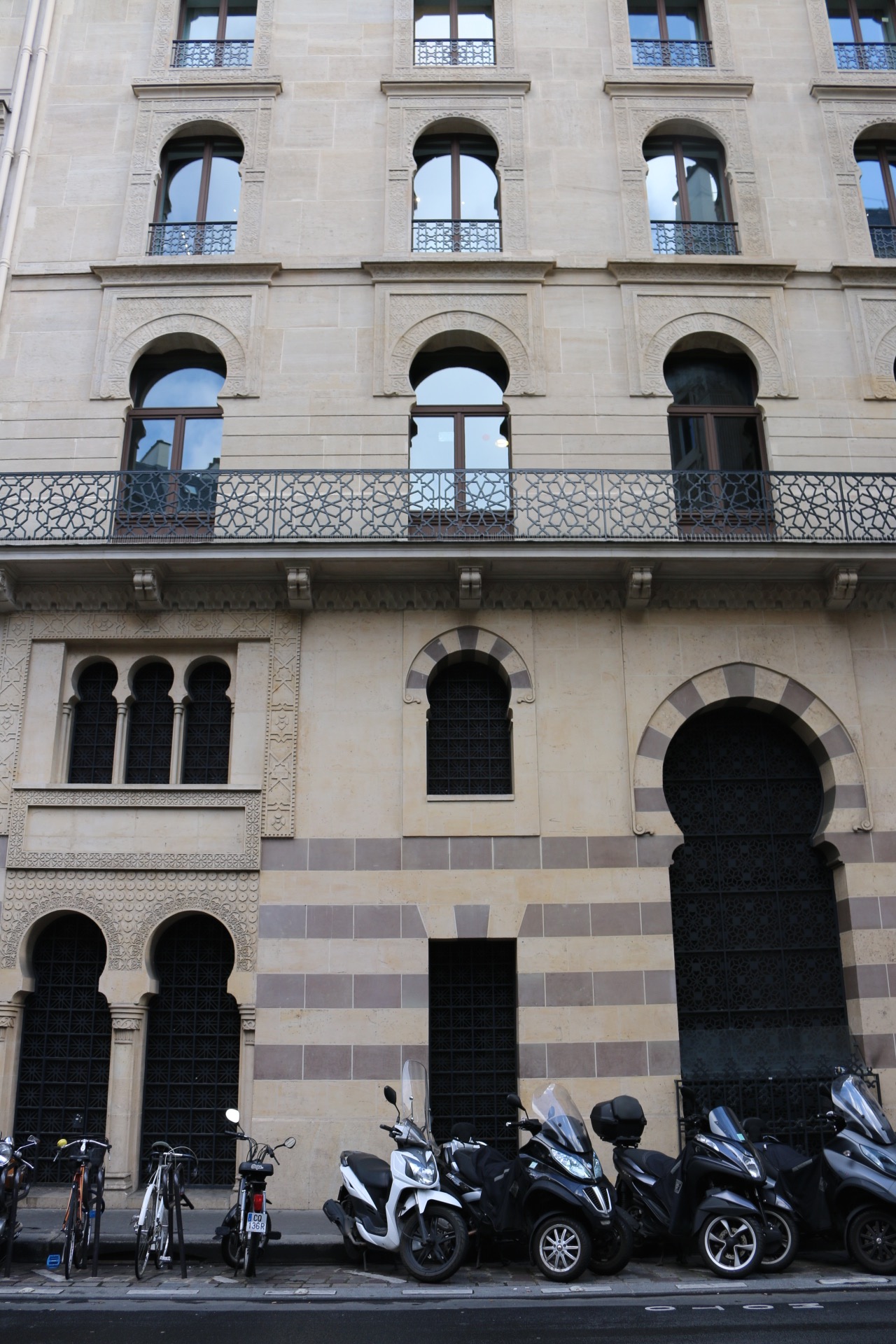
It was built in 1876, by architects Albert Duclos et William Klein at a time when the influence of the Arabian Nights and the prospect of hedonistic pleasures were all the rage. Reserved for men, women could access it from time to time at certain hours, via a discreet entrance located 47 boulevard Haussmann.
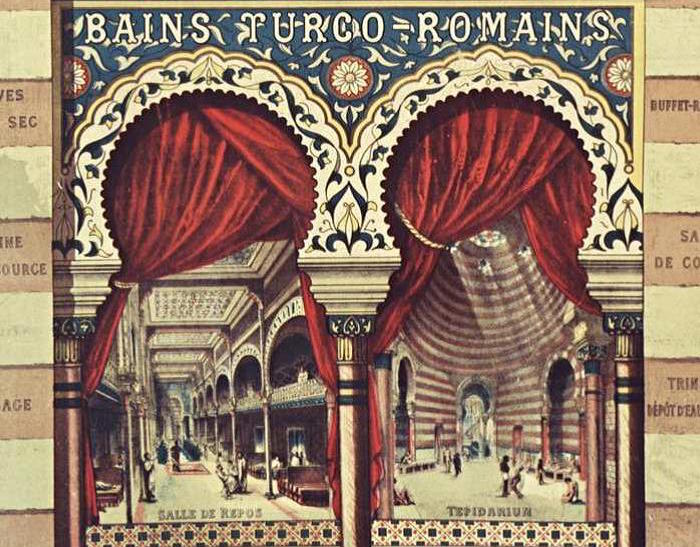
While the facade remains more or less the same as what is depicted in the poster, unfortunately the majestic interiors have since been lost and today it looks like its being used as an office building.
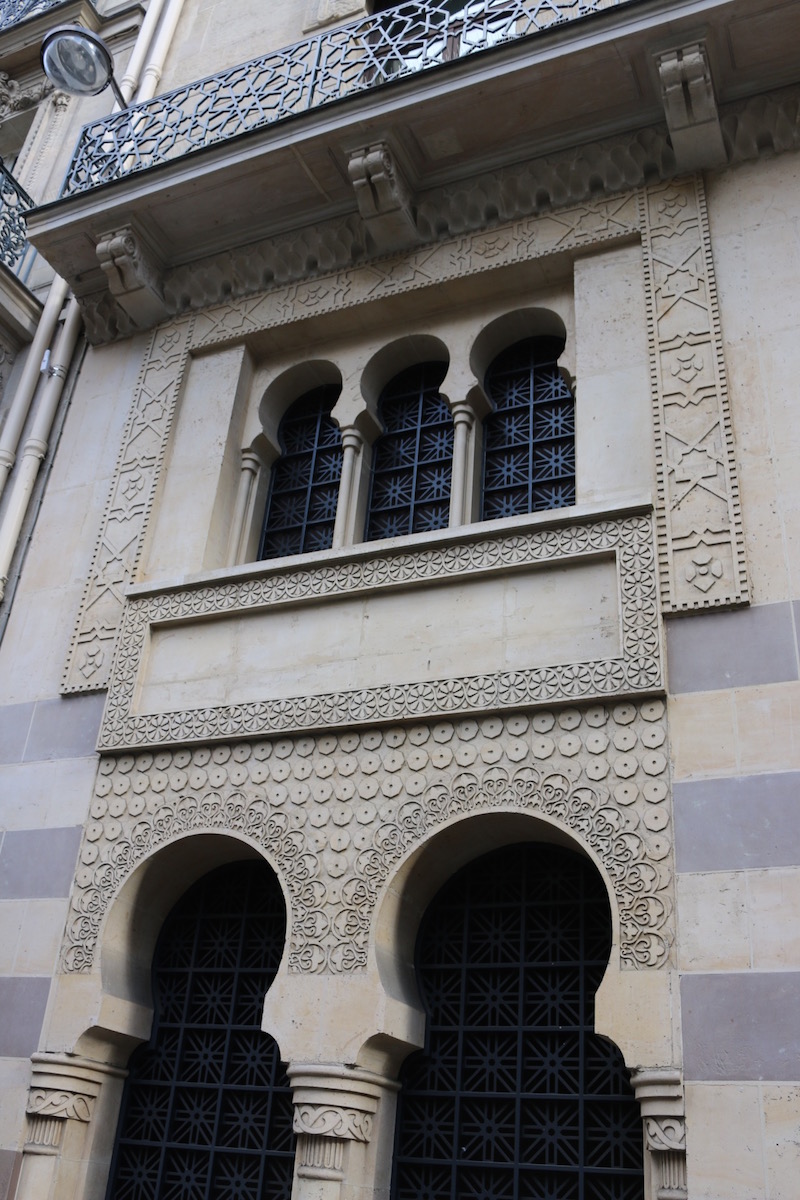
Clues to the ghost bath houses of Paris can be found all across the city. If you have the good habit of looking up, the faded sign lettering for “bains & douches” (showers and baths) can be frequently spotted.
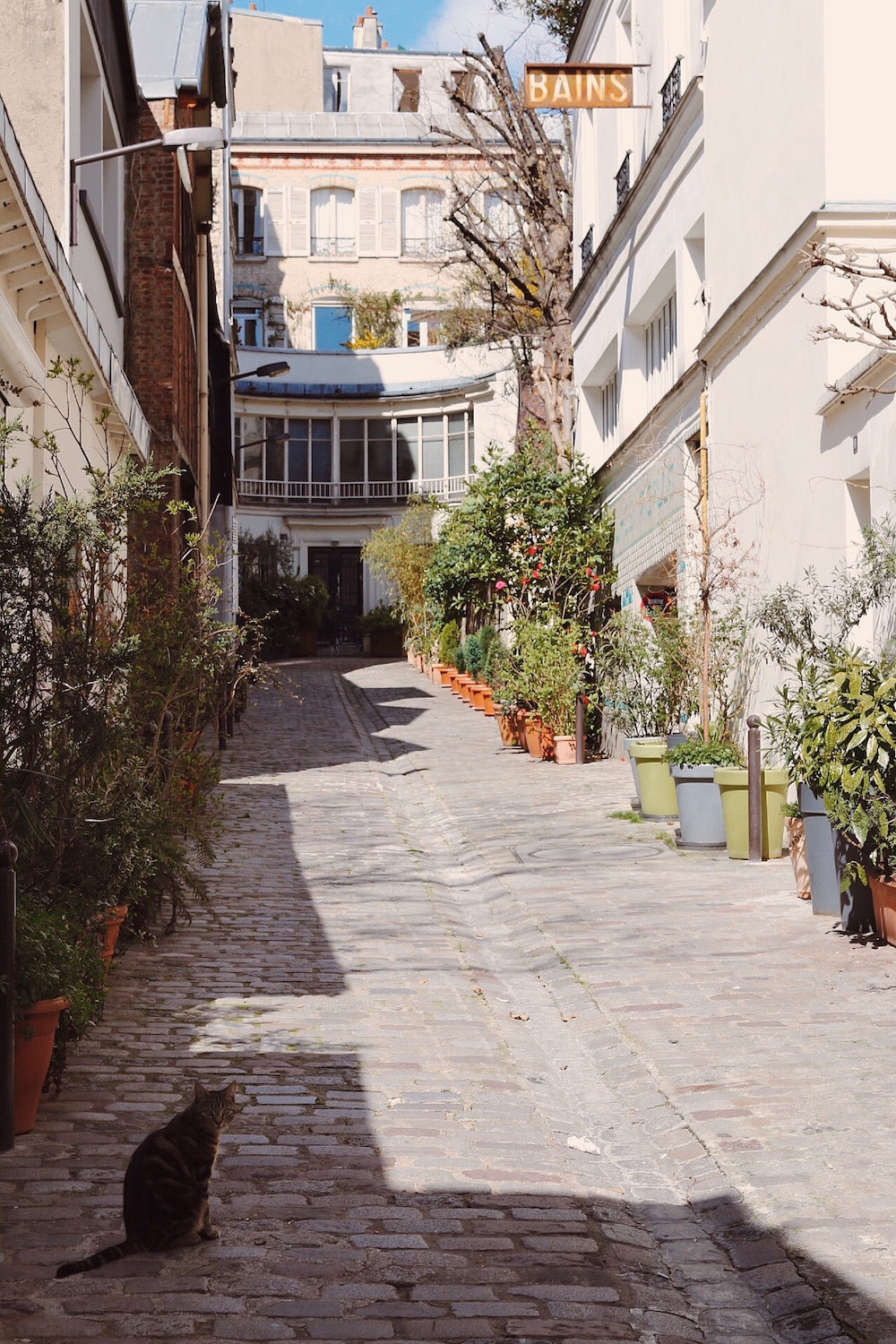
I spied this one ↑ over the weekend down an alleyway called Cité du Midi near the Moulin Rouge. Upon closer inspection on Google streetview, you see the art nouveau signage for “Bains & Douches Pigalle”.
If they haven’t been converted to fancy retail space, prime real estate, offices or even popular nightclubs, some still serve a similar purpose today. While many have been privatised and re-packaged as oriental day spas and hammans, the concept of free public bath houses still exists in Paris (albeit it much less common), to accommodate anyone who, for whatever reason, might need the use of a bathroom.
Rewind to a hundred years ago, and these things were on virtually every street corner…
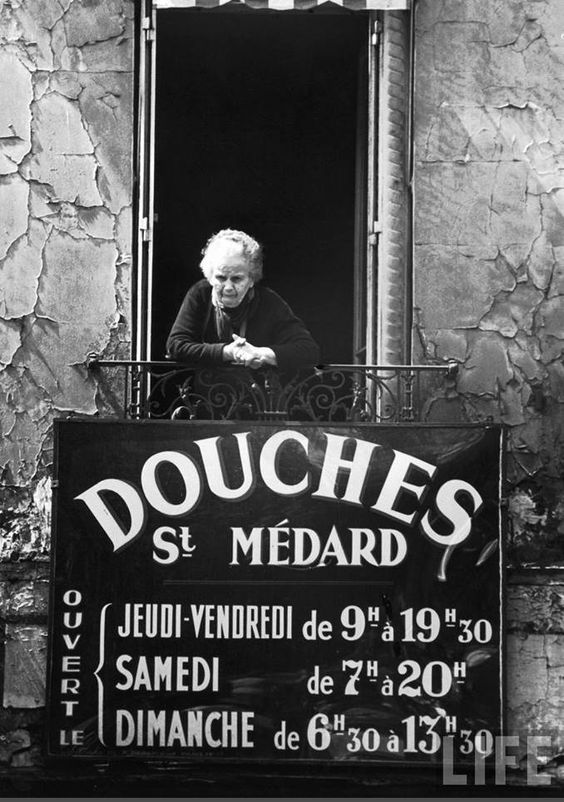
At the time, the majority of Parisian buildings had been constructed without plumbing thanks to an era in French history known as the “smelly century”, when bathing was condemned as both morally and medically hazardous to your health. The thought of a daily shower would have literally filled the 17th century Frenchman with fear, while doctors claimed that with perfume and changing clothes regularly, bathing wasn’t necessary.
When modern medicine finally began to get the idea in the mid-1800s, catching up on bathroom amenities in Parisian households was not going to be easy. With space constraints and the high cost of water and renovation, the practical solution was public baths.
Until as recently as the 1960s, only one out of five Parisian apartments had bathing facilities.
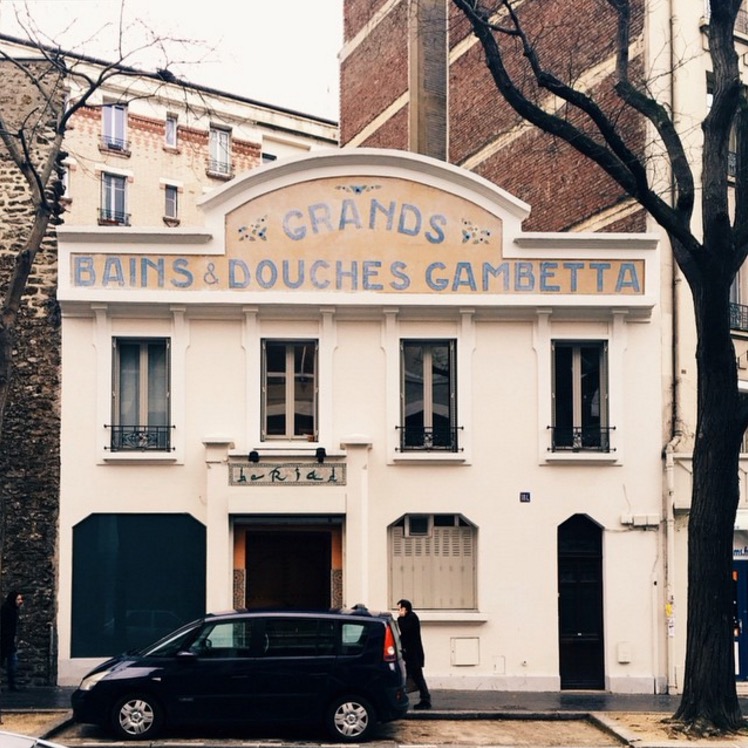
↑ This is the facade of an old bath house in my neighbourhood in the 20th arrondissement (it’s now a privatised hammam spa). Back in the day when bathrooms weren’t exactly “en suite”, it’s funny to think this would have been my local shower spot.
Of course some bath houses were fancier than others, notably the more extravagant ones built during the Belle Epoque which catered to a bourgeois clientele.

These baths were still more for luxury than hygiene, and too expensive for the working classes whose principle means of hygiene consisted of taking a dip in the bathing barges parked along the banks of the Seine.
It wasn’t until 1851 that the government voted to subsidize the construction of affordable public baths with the working class in mind. The majority of the currently existing bains-douches were built after the French allegedly discovered the hygienic benefits of the individual showers that they used in the trenches during WWI.
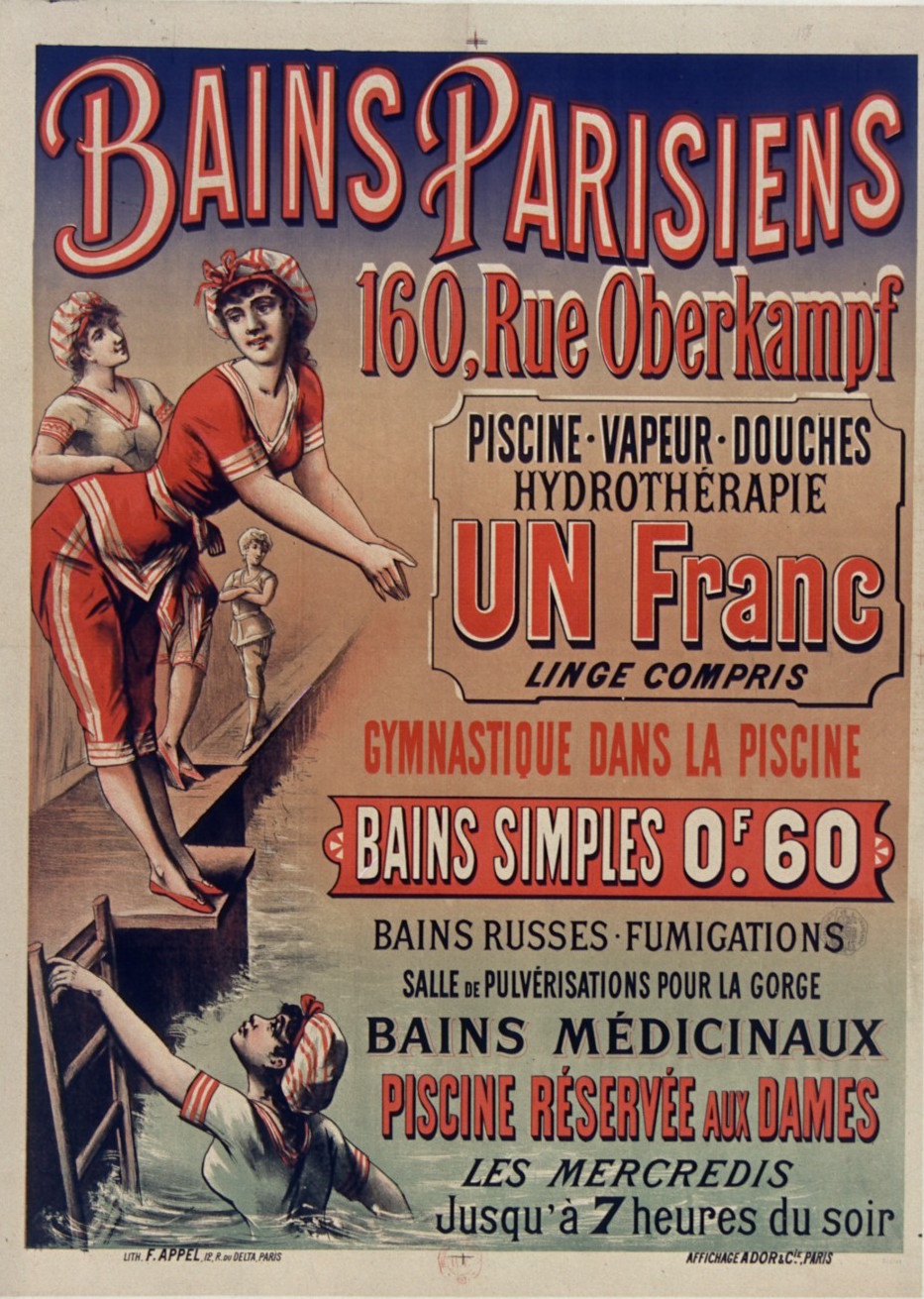
And rather than leaving you with a cliché joke about French people and hygiene, I’ll leave you with a beautiful vintage poster of a ghost bath of Paris, converted into this excellent gif art…
